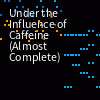I have little to no musical knowledge aside from Online Sequencer, so I can relate, although I've been around and making stuff here for around 2 years now. I believe the best way to get good at making music is to keep making sequences, based on the type of songs you like. It may be difficult at first due to the Sequencer's and your own limitations, but it's still good to keep experimenting.
A good way to get better is to remix other peoples' sequences. By remixing someone else's sequence, you can study how they made it, while at the same time, giving you a lot of room to experiment and add your own stuff to the song.
My limitation was (still is) that I didn't know anything about chords, chord progressions, how to read notes, how to play an instrument etc. so I've had extreme difficulty making piano-only pieces because 90% of the time, I don't know what I'm doing and I'm just doing trial and error. To compensate for this, a lot of my experimentation and experience with this site went into pushing the sequencer's limits, and that's where instrument stacking and pseudo-sustaining come into play. I highly suggest you try incorporating these concepts in your sequences to come.
Instrument stacking is a way to create unique sounds (say you put an electric piano and a grand piano on the same square, it creates a unique sound). You can also use instrument stacking to increase the volume of your instruments. A good instrument to stack for volume is percussion (I think the sequencer's percussion is way too soft unstacked). The type of music you like may not even be using the usual instruments, so it'd be good to do some sound mixing/experimenting and find out which combinations of instruments work the best for you.
Pseudo-sustaining is basically spamming 1/8 or 1/16 in immediate succession (good instruments to spam are the violin and the smooth synth), although doing that creates an irritatingly spammy sound. To counteract this, heavily layering the sequence with other sounds and instruments seem to mask the spammy sound and make them sound smooth. It is quite difficult to pull off pseudo sustains since the sequencer doesn't have a sustain option, but if done correctly, it'll sound fantastic especially with the violin and the smooth synth.
The problem with pushing the sequencer's limits makes a lot of my sequences extremely laggy due to high note density. Have some examples of my sequences: ,
,  . Arrangement-wise, I don't think they're special at all, and are quite basic in structure, but what I think makes them special is how "complete/full(?)" they sound (these sequences make use of a lot of instrument stacking and pseudo-sustaining, so hopefully you learn something from them).
. Arrangement-wise, I don't think they're special at all, and are quite basic in structure, but what I think makes them special is how "complete/full(?)" they sound (these sequences make use of a lot of instrument stacking and pseudo-sustaining, so hopefully you learn something from them).
In a nutshell, keep making sequences, and do your best to make each sequence the best one you have.
A good way to get better is to remix other peoples' sequences. By remixing someone else's sequence, you can study how they made it, while at the same time, giving you a lot of room to experiment and add your own stuff to the song.
My limitation was (still is) that I didn't know anything about chords, chord progressions, how to read notes, how to play an instrument etc. so I've had extreme difficulty making piano-only pieces because 90% of the time, I don't know what I'm doing and I'm just doing trial and error. To compensate for this, a lot of my experimentation and experience with this site went into pushing the sequencer's limits, and that's where instrument stacking and pseudo-sustaining come into play. I highly suggest you try incorporating these concepts in your sequences to come.
Instrument stacking is a way to create unique sounds (say you put an electric piano and a grand piano on the same square, it creates a unique sound). You can also use instrument stacking to increase the volume of your instruments. A good instrument to stack for volume is percussion (I think the sequencer's percussion is way too soft unstacked). The type of music you like may not even be using the usual instruments, so it'd be good to do some sound mixing/experimenting and find out which combinations of instruments work the best for you.
Pseudo-sustaining is basically spamming 1/8 or 1/16 in immediate succession (good instruments to spam are the violin and the smooth synth), although doing that creates an irritatingly spammy sound. To counteract this, heavily layering the sequence with other sounds and instruments seem to mask the spammy sound and make them sound smooth. It is quite difficult to pull off pseudo sustains since the sequencer doesn't have a sustain option, but if done correctly, it'll sound fantastic especially with the violin and the smooth synth.
The problem with pushing the sequencer's limits makes a lot of my sequences extremely laggy due to high note density. Have some examples of my sequences:
In a nutshell, keep making sequences, and do your best to make each sequence the best one you have.

